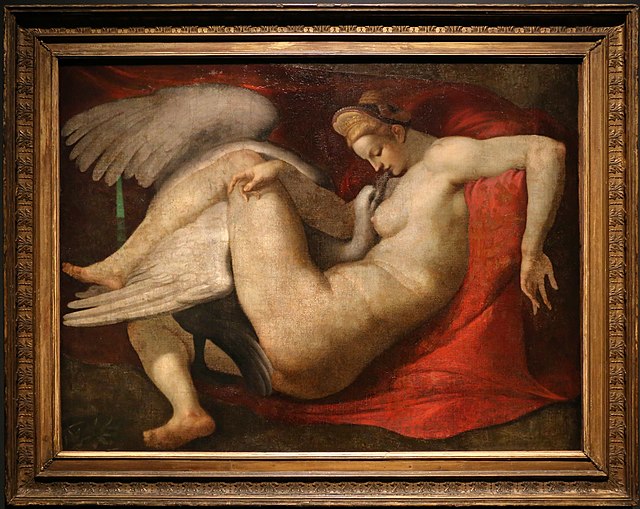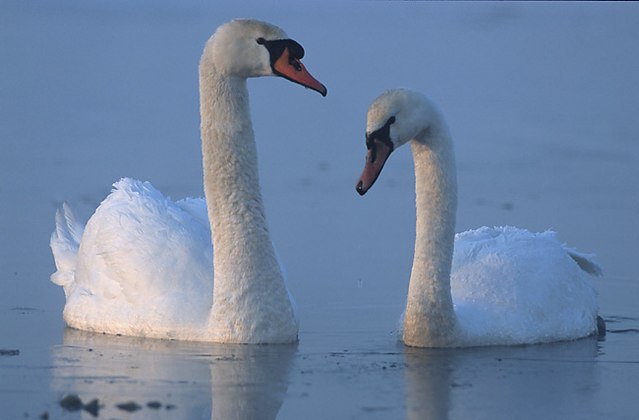Leda and the Swan is a story and subject in art from Greek mythology in which the god Zeus, in the form of a swan, seduces or rapes Leda, a Spartan queen. According to later Greek mythology, Leda bore Helen and Polydeuces, children of Zeus, while at the same time bearing Castor and Clytemnestra, children of her husband Tyndareus, the King of Sparta. According to many versions of the story, Zeus took the form of a swan and raped Leda on the same night she slept with her husband King Tyndareus. In some versions, she laid two eggs from which the children hatched. In other versions, Helen is a daughter of Nemesis, the goddess who personified the disaster that awaited those suffering from the pride of Hubris.

"...this statue is a first-century Roman version of an earlier Greek statue from the 300s B.C. attributed to Timotheos. More than two dozen examples of this statue survive, attesting to the theme's popularity among the Romans. ...Both arms, most of the outstretched cloak, the swan's head, and the folds of cloth between Leda's legs are eighteenth-century restorations. The head, though ancient, is not original to this work, but comes from a statue of Venus".
Leda and the Swan, a 16th-century copy after a lost painting by Michelangelo (National Gallery, London)
Roman oil lamp, 1st century AD
Leda and the Swan, Roman marble possibly reflecting a lost work by Timotheos from the 300s BCE. More than two dozen examples of this statue survive. restored (Prado)
Swans are birds of the genus Cygnus within the family Anatidae. The swans' closest relatives include the geese and ducks. Swans are grouped with the closely related geese in the subfamily Anserinae where they form the tribe Cygnini. Sometimes, they are considered a distinct subfamily, Cygninae.
Swan
An adult mute swan (Cygnus olor) with cygnets in Vrelo Bosne, Sarajevo, Bosnia and Herzegovina
A mute swan landing on water. Due to the size and weight of most swans, large areas of open land or water are required to successfully take off and land.
Whooper swans migrate from Iceland, Greenland, Scandinavia, and northern Russia to Europe, Central Asia, China, and Japan








